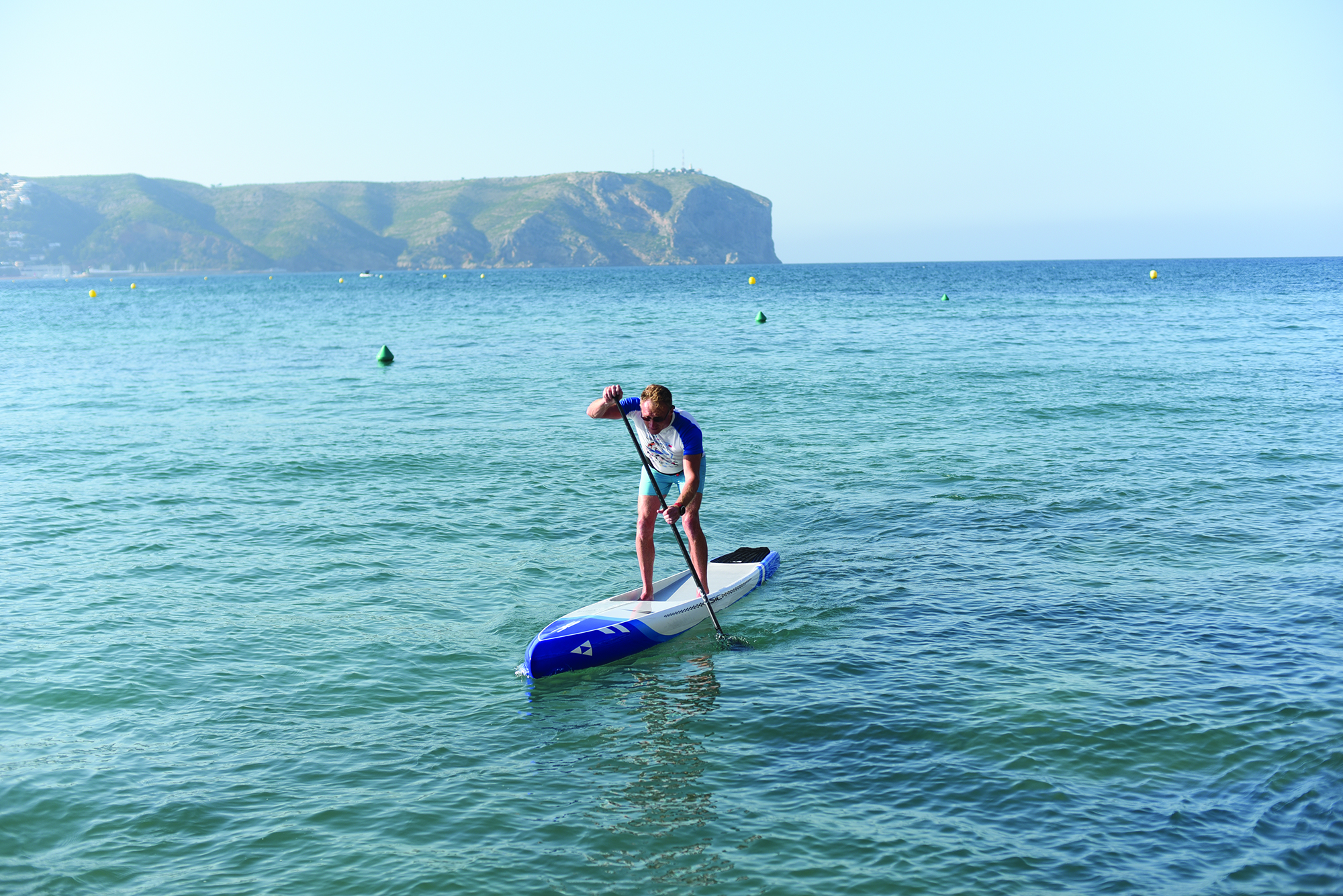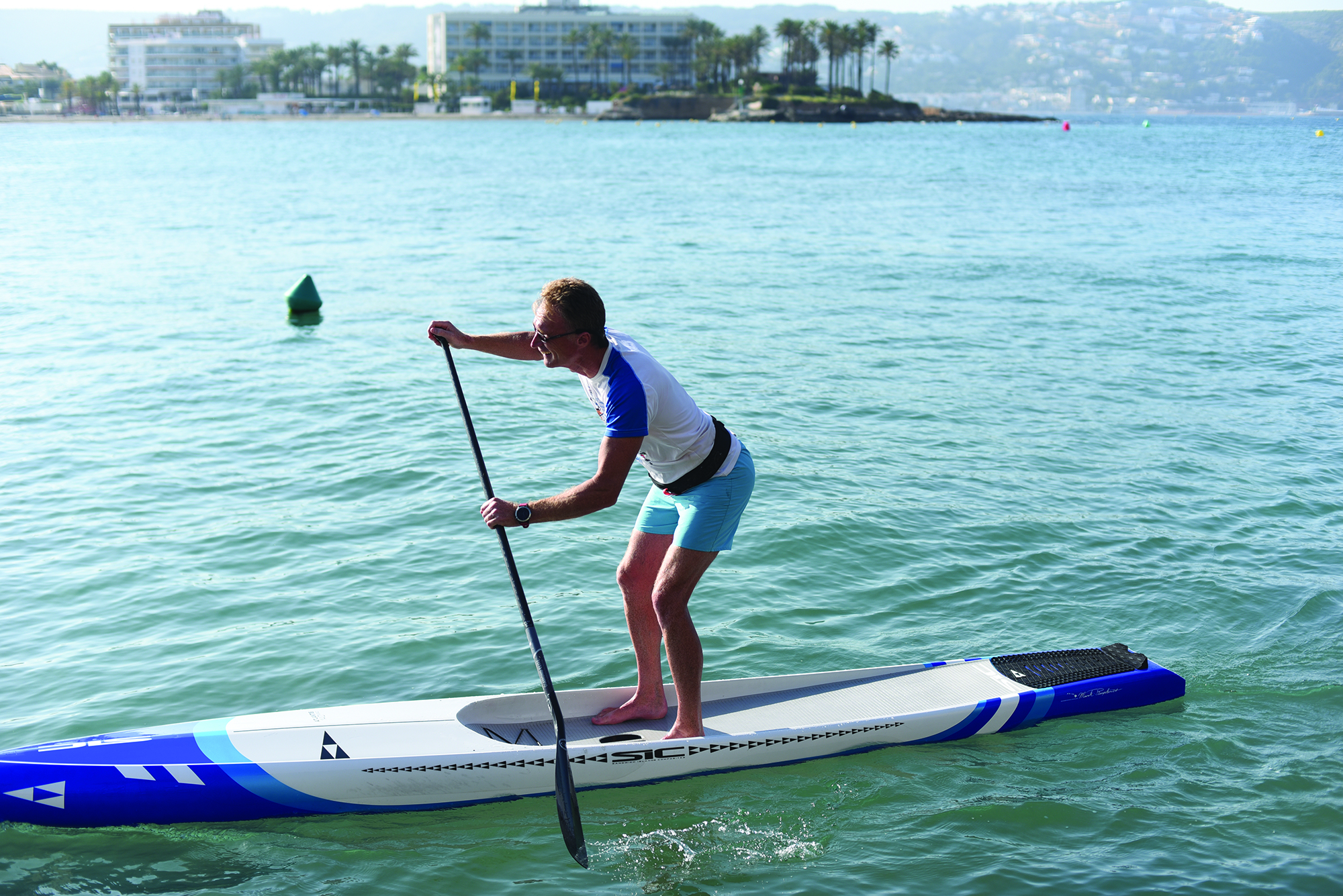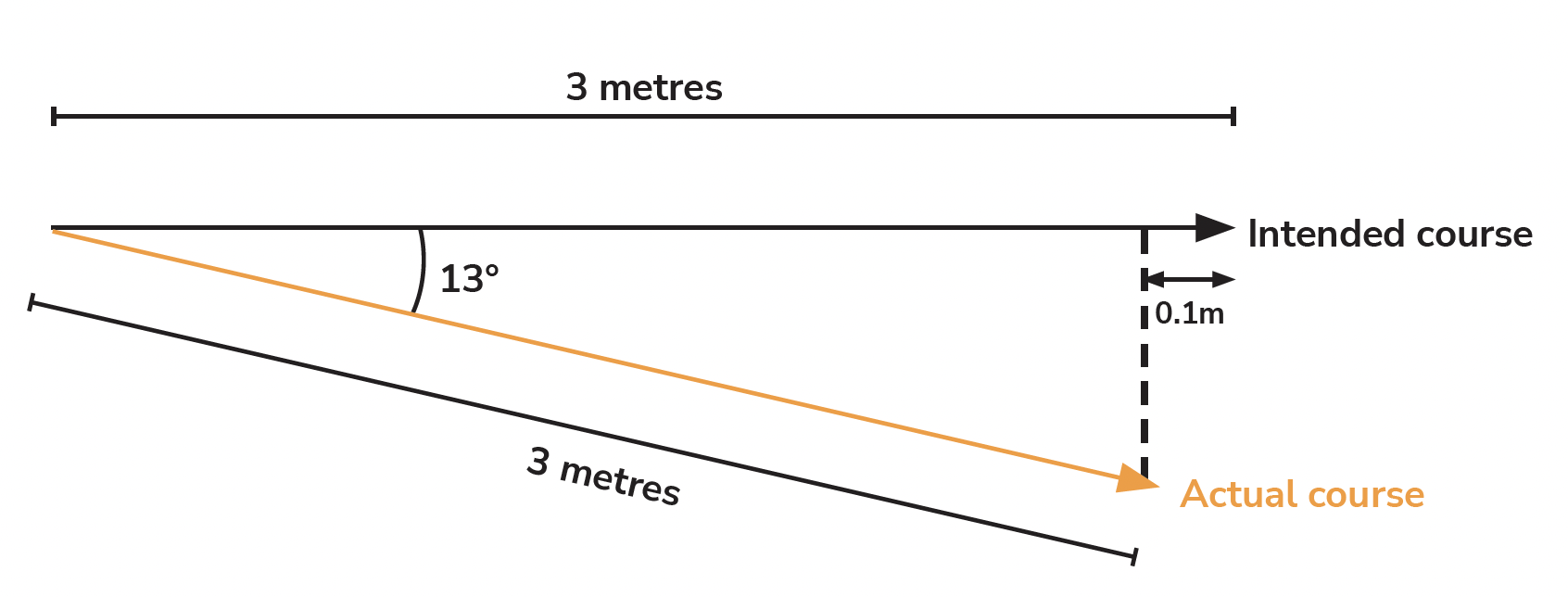The Habits Of The Inefficient Paddler
Book Extract
Meanwhile, inefficient paddlers do some or all of the following:
- Allow the board to rock from side to side by shifting body weight when changing paddle hand. When this happens, the side with more weight digs into the water, creating an imbalance in drag. There is a slowing of the board on that side and a resultant loss in course direction. This also presents a higher risk of falling into the water.
- Allow the board to tip excessively front to back. The paddler does not move their feet to compensate, causing the board to pitch into the waves in front, creating stalling. This slows the board drastically. This can occur both heading into waves and going with the waves.
- Stand with their head in front of (instead of above) their body. There is now a force with a component acting opposite to where they want to go. This force will slow them down.
- Paddle offline: because they direct the blade in such a way that it does not propel them ‘straight’, they lose distance every stroke.
- Do not change paddle hands very quickly, causing missed strokes and excessive slowing of the board.
- Do not twist the paddle at the release, slowing the board glide.
- Do not feather the blade during recovery, which increases the energy required to produce the stroke and inhibits cadence.
- Waste forward energy by pushing their backsides backwards in the power phase.
- Fall off their boards more frequently than others.
- Adopt an uncomfortable posture, such as hunched back and shoulders that can increase lower or higher back pain.
- Build too much tension in the feet, creating numbness or pain.
- Adopt straight legs making the stance uncomfortable and unstable in choppier conditions.
While all these things might seem minor, paddling is an incremental activity. An hour’s paddling is comprised of literally thousands of individual strokes. If each stroke has inbuilt inefficiency, these individual errors are therefore amplified by a factor of thousands.

Paddle not vertical, causing the board to go sideways thereby losing forward propulsion

Paddler has their head too far beyond their body, causing an unstable stance
Example Of The Effect Of Inefficiency
In the following example, assume the paddler has:
An average stroke distance of 3m (i.e. the distance the board goes per stroke is 3m)
A paddle rate of 44 strokes per minute
This means that, over an hour, they would expect to cover a distance of:
60 minutes x 44 strokes per minute x 3m per stroke = 7920m = 7.9km
Issue 1: In each paddle stroke, they paddle at an angle of 13 degrees to the intended line. This means they are losing 0.1m per stroke to the line they want to follow.

Issue 2: They stand with their head ahead of the body, thereby creating an opposing force acting against their intended direction. This could reduce their distance per stroke by another 0.1m per stroke.
Issue 3: They miss 2 strokes (through poor changeover) per minute which means they lose 6m distance per minute.
These errors add together meaning a loss of:
Issue 1: 0.1m per stroke x 60 minutes x 44 strokes per minute = 264m
Issue 2: 0.1m per stroke x 60 minutes x 44 strokes per minute = 264m
Issue 3: 6m per minute x 60 minutes = 360m
Total lost distance = 888m = 0.9km
So the actual distance they would travel is:
7.9km – 0.9km = 7km
If they could correct these errors they would travel 13% further in the same time!